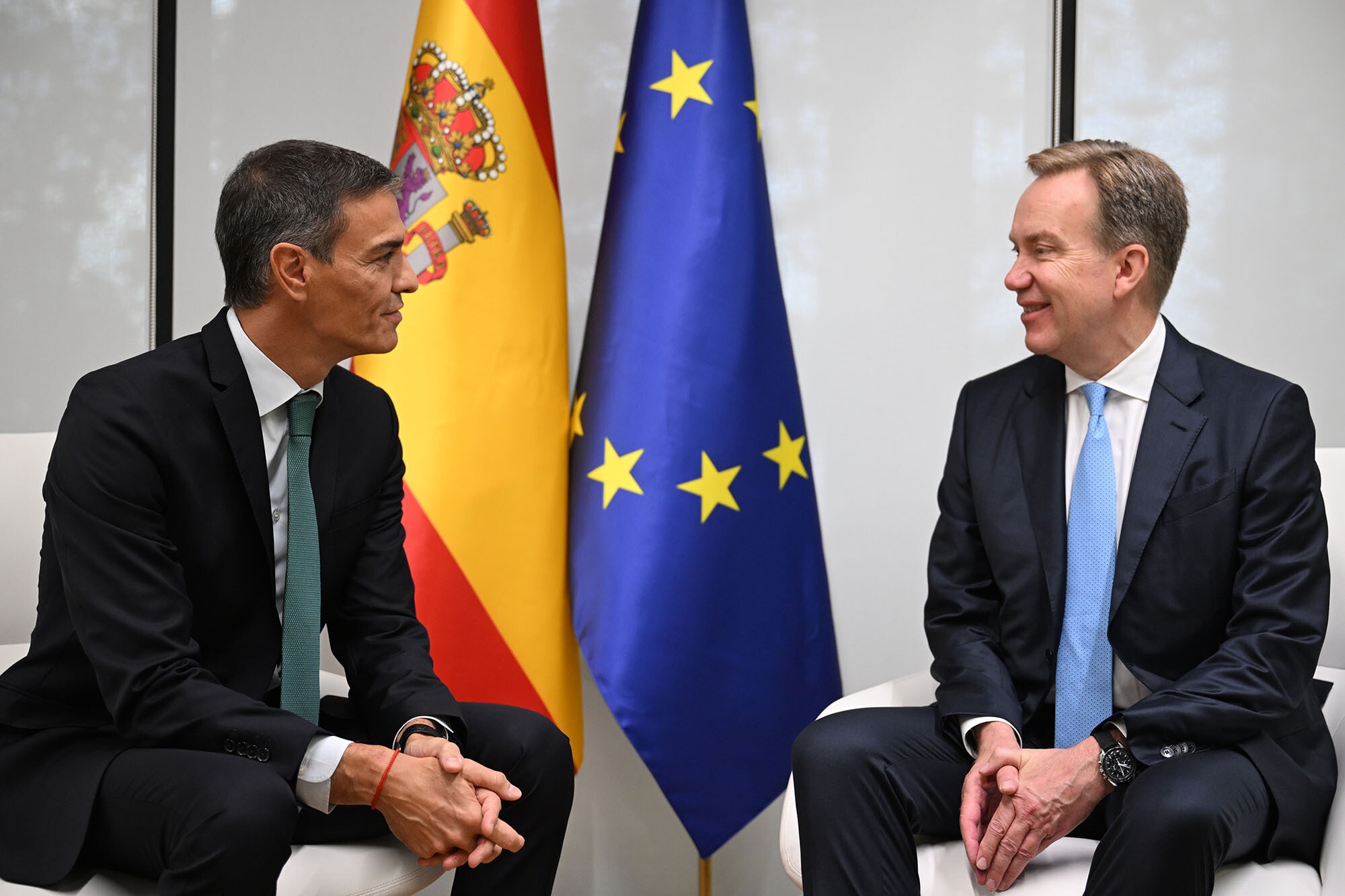Chief Procurement Officers: What they do and why they’re ‘unsung heroes’ for tackling big global challenges

Chief Procurement Officers can manage tens of thousands of suppliers at a single organization as they oversee how a company acquires goods and services. Image: Photo by Appolinary Kalashnikova on Unsplash
- In recent years, the world has faced big disruptions to supply chains while other challenges - like climate change and humanitarian crises - have worsened.
- Business procurement is playing a key role in meeting those challenges, helping companies think strategically with suppliers, while slashing emissions, protecting human rights and forging new collaborations to meet big goals.
- Leaders interviewed at the World Economic Forum's recent Procurement Innovation Summit, share how Chief Procurement Officers (CPOs) are helping tackle big goals for business and the planet.
Chief Procurement Officers can manage tens of thousands of suppliers at a single organization as they oversee how a company acquires goods and services.
But procurement leaders have another critical role. Given unprecedented supply chain disruption in recent years, these executives can help firms manage supply chain risk that some experts estimate is still growing at a swift pace.
These leaders also have an impact on how companies can tackle big global challenges - from humanitarian issues to the climate - and have a one-of-a-kind perspective on how companies can craft solutions.
Here’s what anyone can understand about this role - and why it’s so important.
Chief Procurement Officers: What CPOs Do
Procurement leaders manage the firm’s supply networks. While in some companies this is limited to a “smaller, rudimentary” transactional role, it increasingly is serving as a wider strategic driver.
Procurement leaders with a strategic remit work with every function across the company, says Volvo Group CPO Andrea Fuder, proposing new partners to engineers, helping to incubate and trial new technologies, ensuring products are competitive and making sure that delivery is precise.
Managing spend also ensures companies are resilient, and that suppliers are acting responsibly and sustainably, says Schneider Electric CPO Daniel Bartel.
As a result, these leaders study everything from quality control, technology and risk models to decarbonisation, cybersecurity, and more.

While there is no typical day, Vattenfall’s Bjorn Stenecker says his role breaks into two major shares: around 50% focusing on decision making (approving commercial activities, etc.,) with the remaining half dealing with change management and organizational structures.
Working with outside suppliers means CPOs have a unique perspective on external forces that can impact companies: micropolitics, currency, inflation and a host of other larger global issues.
“You have to be very well aware about all the things in the political arena and the macroeconomics around you,” says Fuder. As she describes it, CPOs are a “spider in the web,” having a full, holistic view of what is happening both within a company and outside of it.
How the Chief Procurement Officer Role Has Evolved
This procurement role has shifted in recent decades. “I would say 10 or 20 years ago it was more transactional, a very commercial driven discussion," says Stenecker. “What's in it for us as a company – that type of behavior.”
Sustainability needs have driven a key shift. Says Stenecker: “Since sustainability is such a big part of the agenda, you cannot have that type of behavior. You need to collaborate internally. But at the same time also with suppliers, you cannot just have this strict buyer or seller relationship anymore. You need to find new ways. That calls also for a lot of more collaborations.”

How Chief Procurement Officers Impact Big Global Challenges
CPOs can play a critical role in tackling a company's emissions by making sure suppliers deliver on sustainability commitments.
“Chief procurement officers can fit into a net zero strategy as a key deliverer of part of the strategy,” says Rachael de Renzy Channer, Egon Zehnder's Global Head of Sustainability.
Vattenfall, for instance, aims to reduce its scope three emissions – the emissions produced by its suppliers - by 50%. Stenecker’s role is studying a range of activities that can be approached in new ways to meet that goal, including steel, cement, plastic, copper and other materials. While an energy supplier such as Vattenfall might not be buying materials such as steel or concrete directly, it would ensure that its suppliers for equipment or certain structures are using carbon-free steel. Says Stenecker: “We are extremely active in that market, teaming up with steel producers to make sure that they are aggressive in their agenda to develop carbon free steel.”
Procurement leaders can also help turn the tide for humanitarian challenges. There's an element of social justice as well, says de Renzy Channer, “ensuring that through the supply chain, there are fair wages, traceability through sourcing and things like that.”
Therefore, given their remit to shape a company's impact in the long term, procurement leaders are “unsung heroes,” says de Renzy Channer. “They have huge power to start signaling to the market the intent of sustainability matters and creating a virtuous cycle too.”
What’s Needed Next
Those in firms where procurement serves smaller support roles can look for new ways to drive impact. Stenecker suggests teaming up with colleagues in sustainability, technology or R&D. “These are the functions that have the knowledge of what needs to be done. Procurement can then add to the competence of the entire supply base.”
"We can do a lot more than just drive cost reduction, right?,” adds Bartel. “We have to assure the right quality resilience, sustainability, like we're discussing cost, etc. But we can also enable the growth of the business."
Procurement leaders serving strategic functions in their organizations can continue to seek out unique and innovative partnerships. Says Stenecker: “We need to be a bit more bold and go into joint ventures, into partnership to make sure that our suppliers dare to invest in green technology that ultimately will benefit us. We cannot just expect them to do that on their own. And then when they're ready, we're going to buy their products or services. So more joint ventures, more partnerships, more collaboration with our suppliers.”

Fuder agrees: “Collaboration, collaboration, collaboration. Forget transactional processes."
“We have to synchronize public and private roadmaps. We have to work internally in the companies, but also externally, hand in hand, to make it happen.”
In any organization, however, procurement’s impact can be maximized by top leadership. Says Stenecker: “Companies need to have a procurement organization that fully understands the impact of how to work with sustainability and specifically in CO2 reduction, because the impact that can be made with the supply base is usually far bigger than the impact the company itself can do to reduce CO2.”
Says de Renzy Channer: “they actually have an opportunity and perhaps a responsibility to start shaping the strategy. They should play an active role in formulating as part of a net zero strategy how the supply chain is going to deliver on the net zero.”
“The silos that we've been operating in need to need to be broken.”
Don't miss any update on this topic
Create a free account and access your personalized content collection with our latest publications and analyses.
License and Republishing
World Economic Forum articles may be republished in accordance with the Creative Commons Attribution-NonCommercial-NoDerivatives 4.0 International Public License, and in accordance with our Terms of Use.
The views expressed in this article are those of the author alone and not the World Economic Forum.
Stay up to date:
Climate and Nature
Forum Stories newsletter
Bringing you weekly curated insights and analysis on the global issues that matter.







